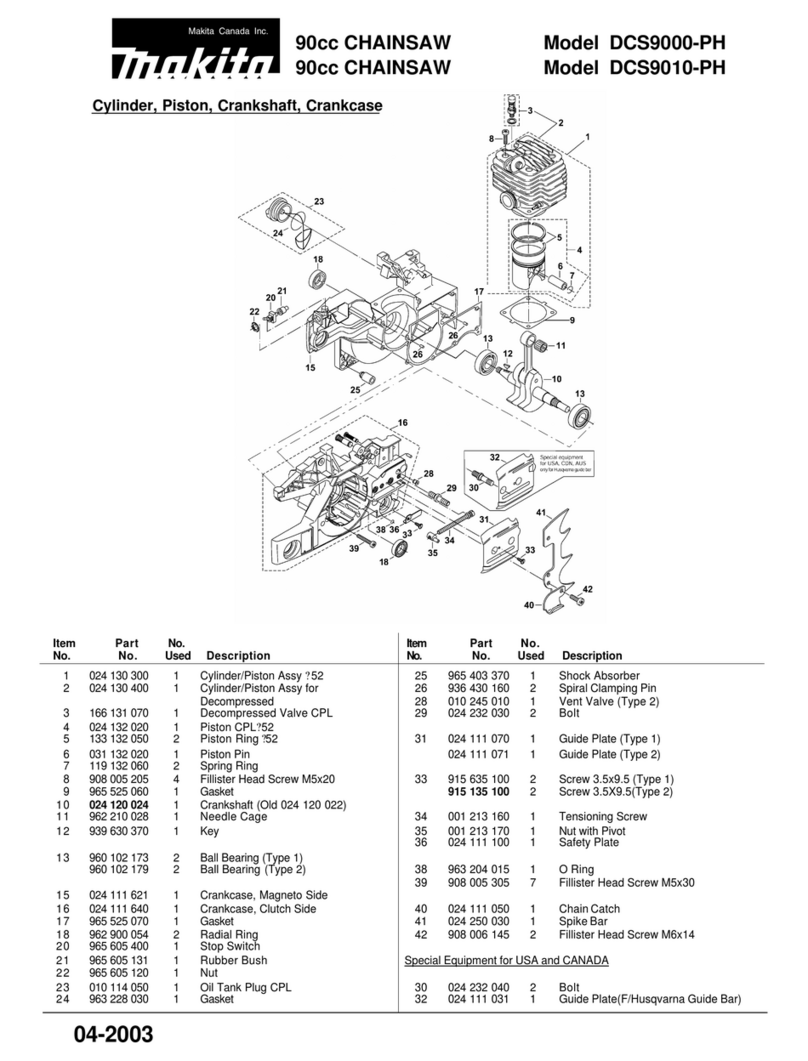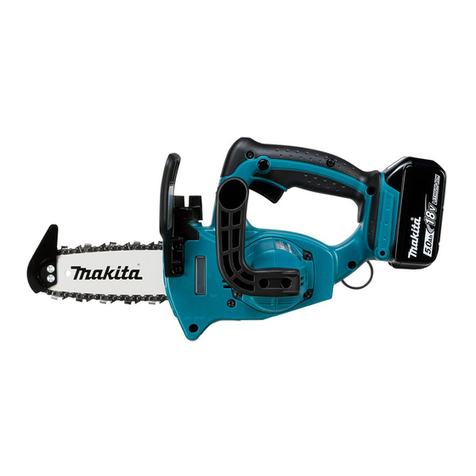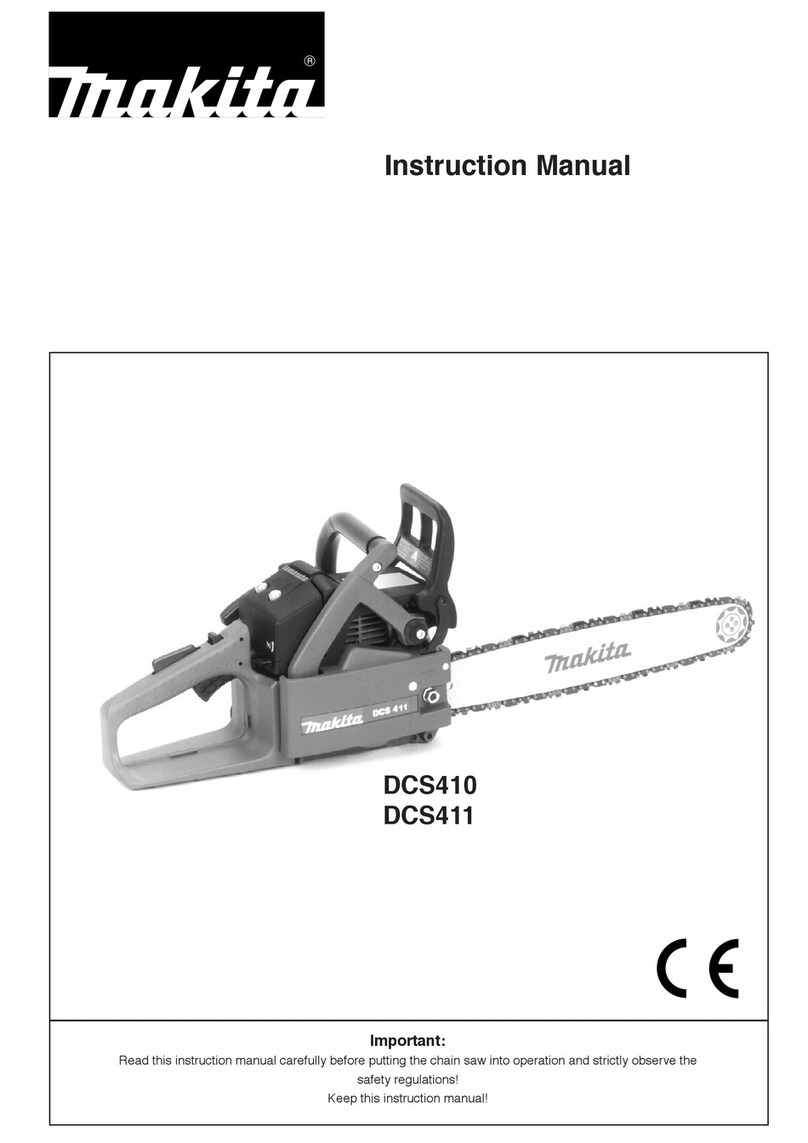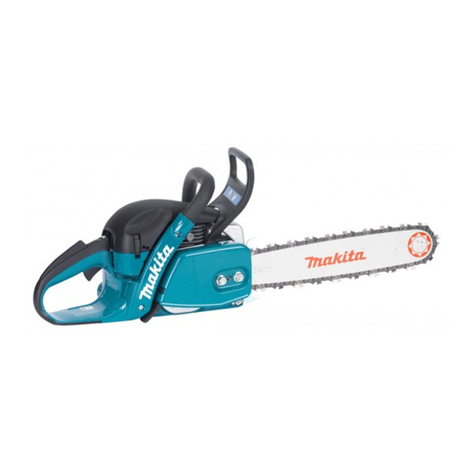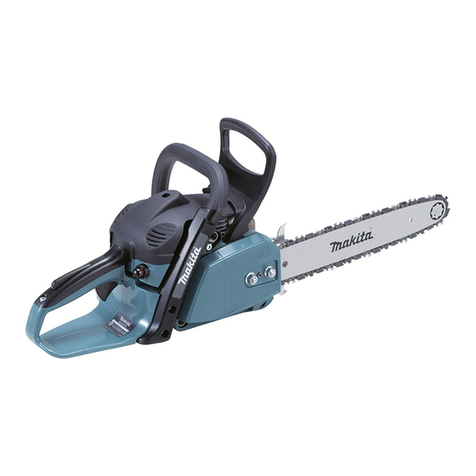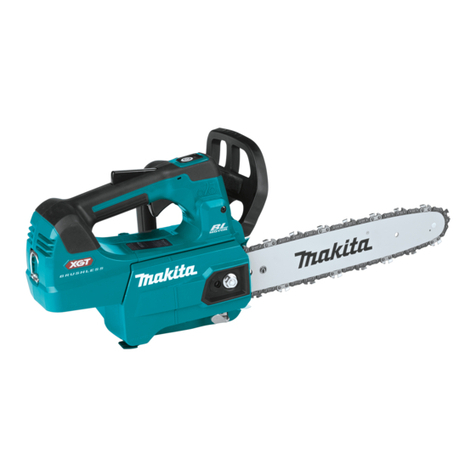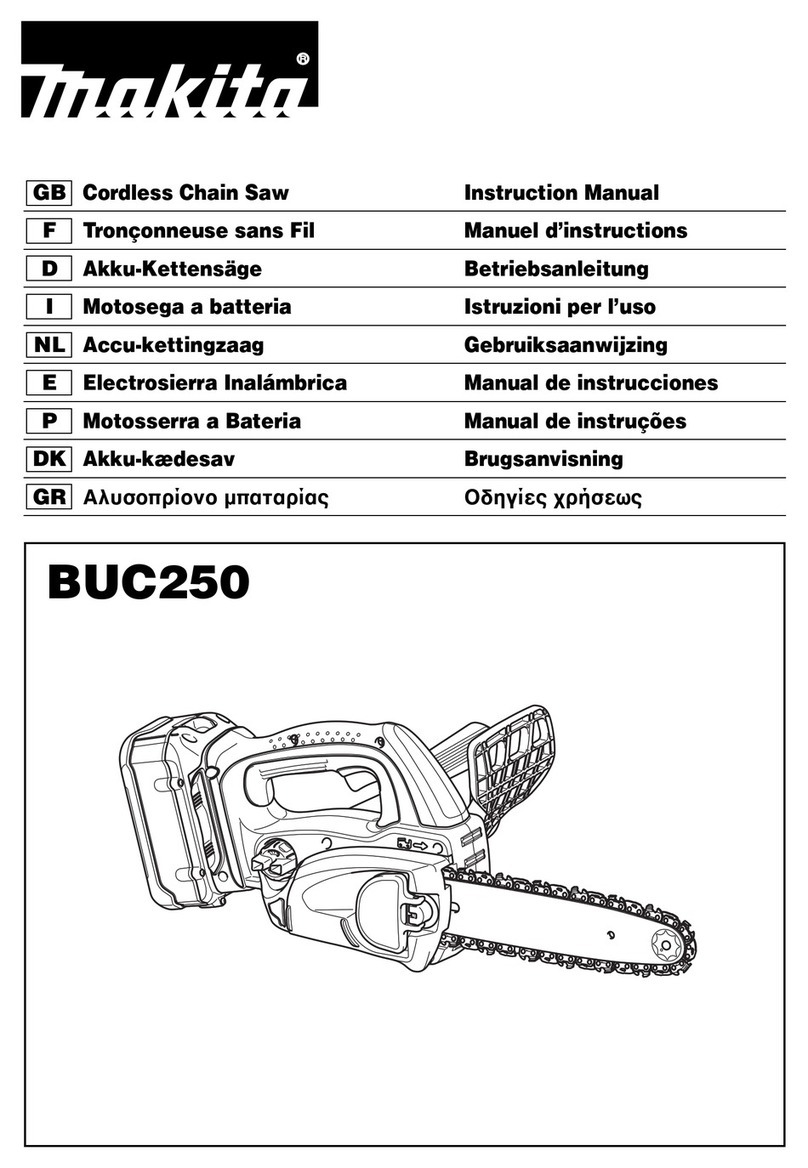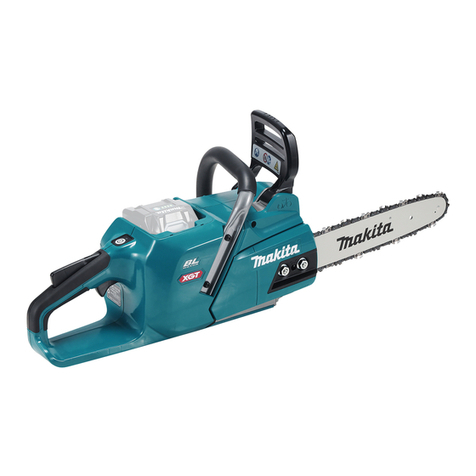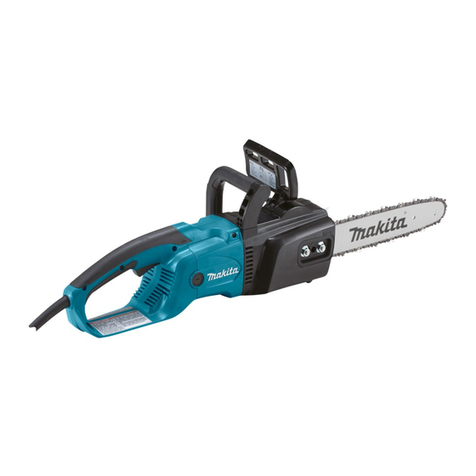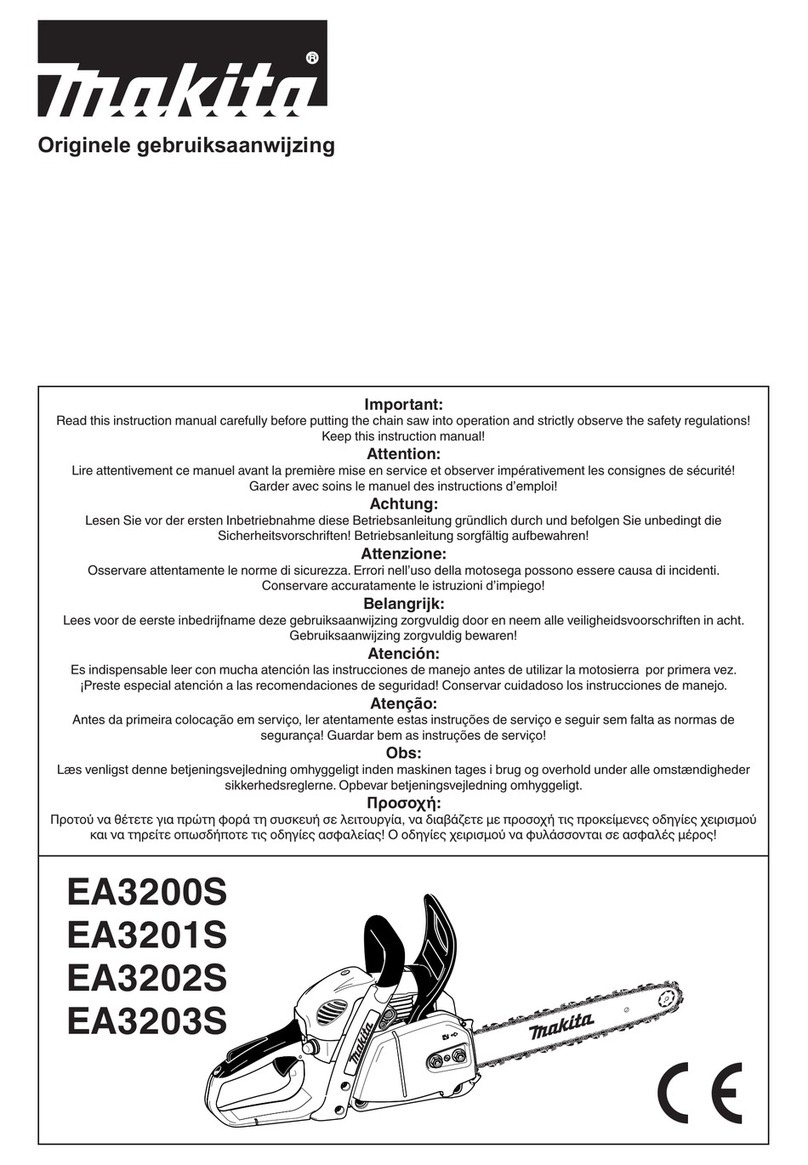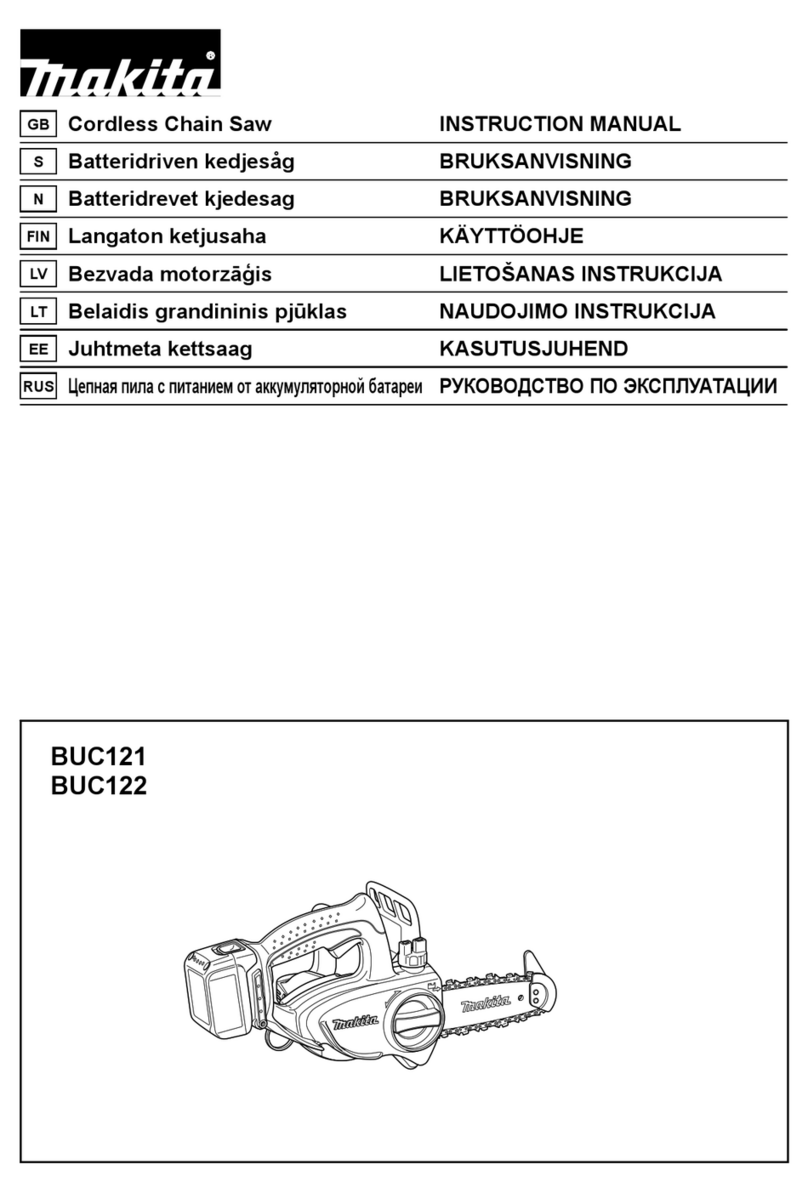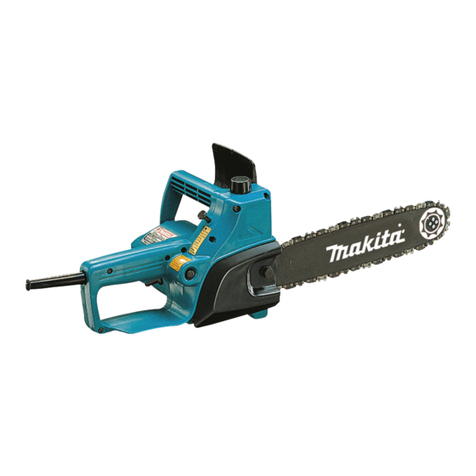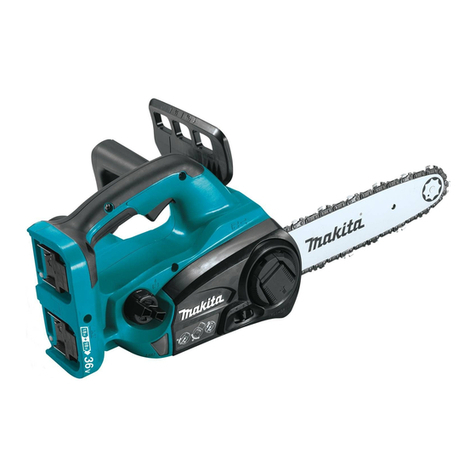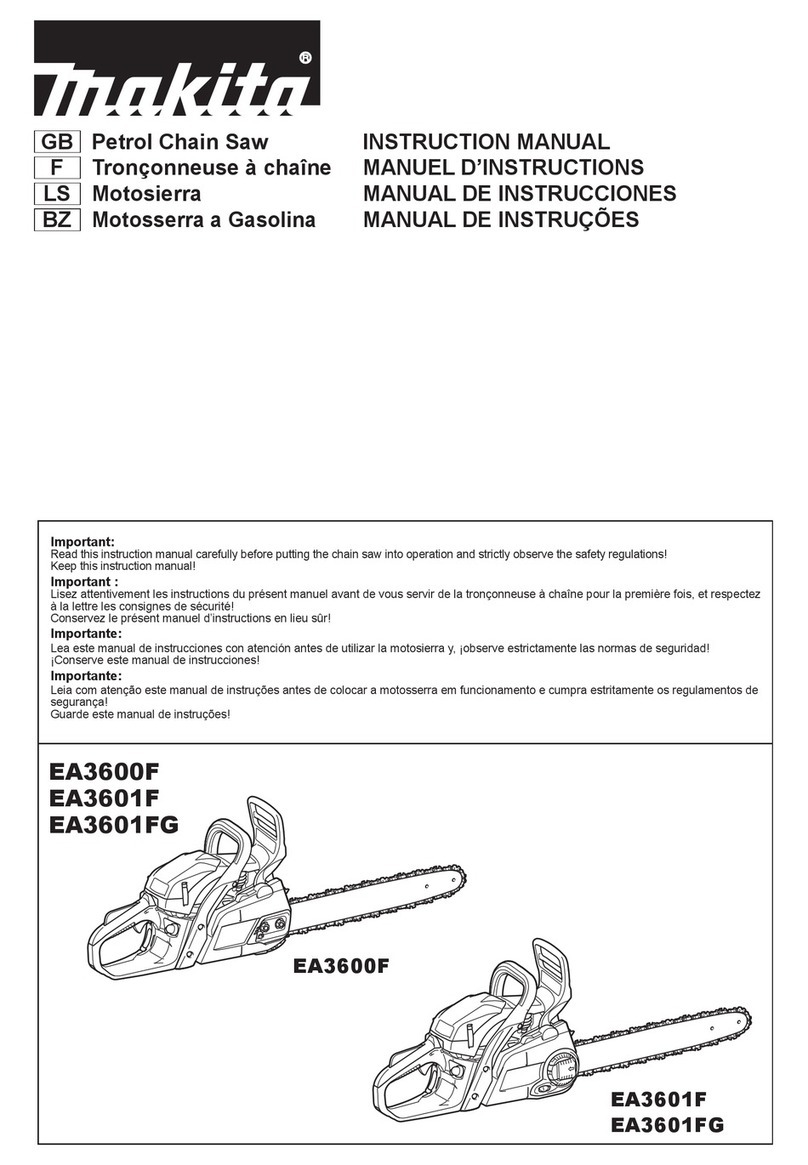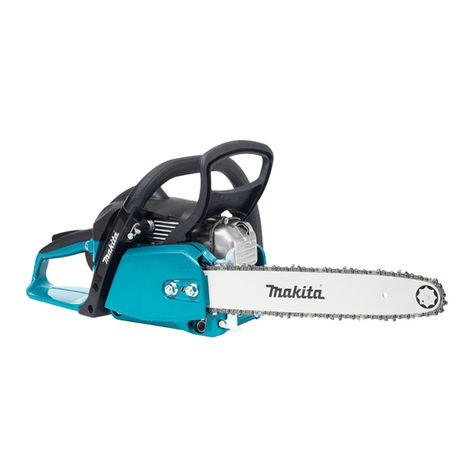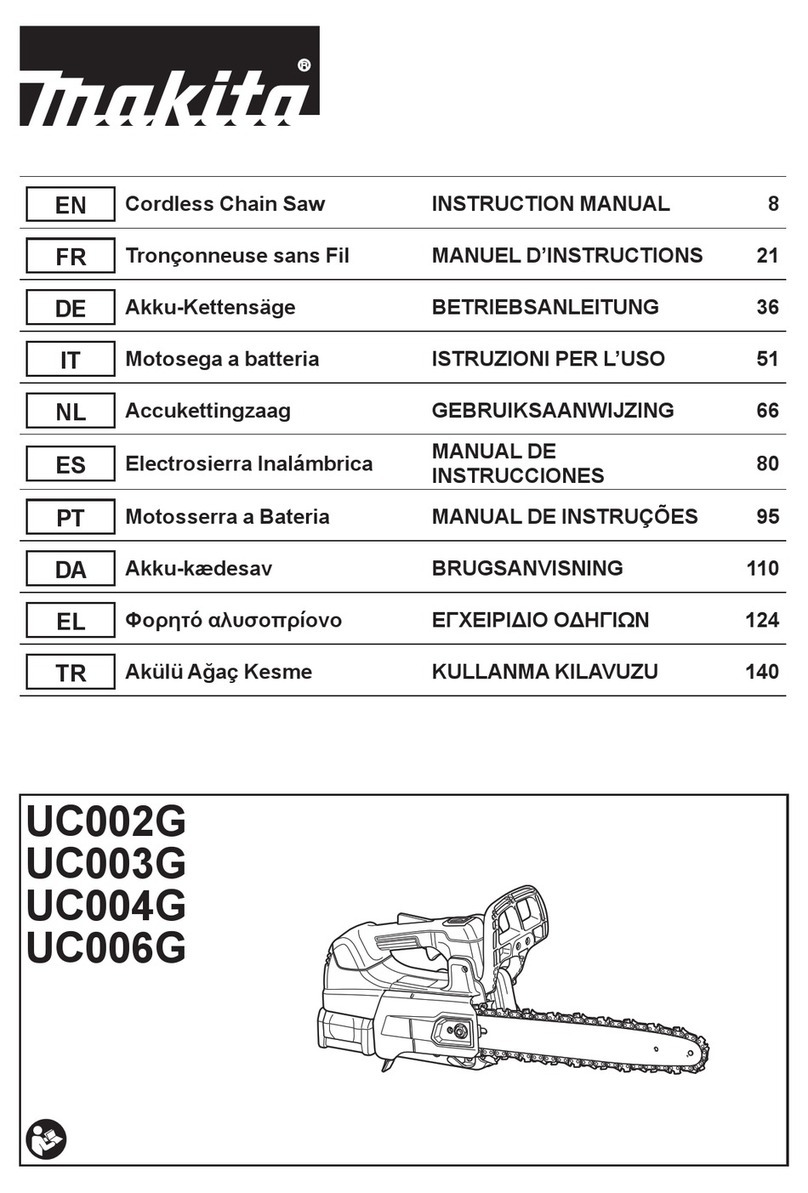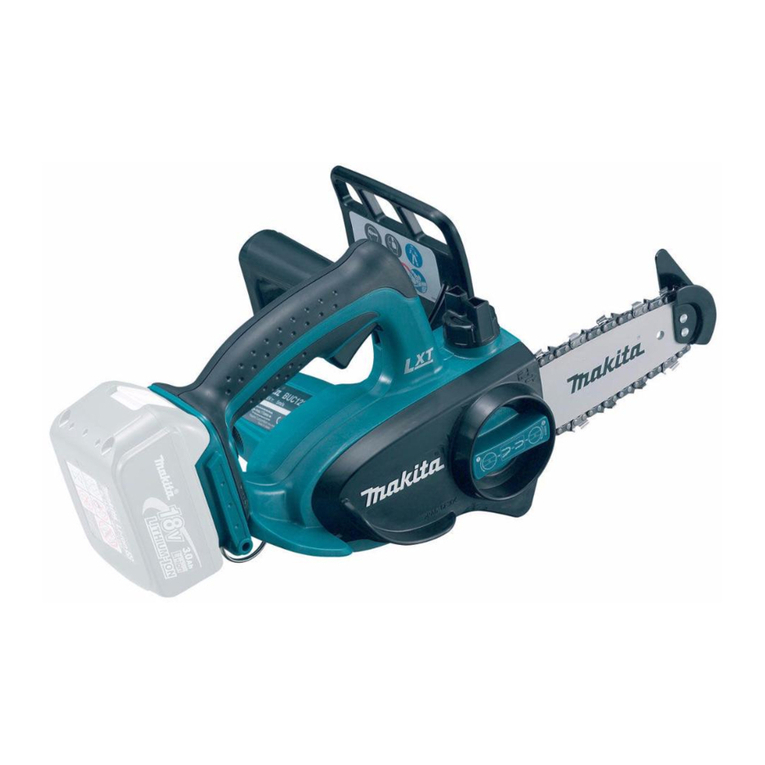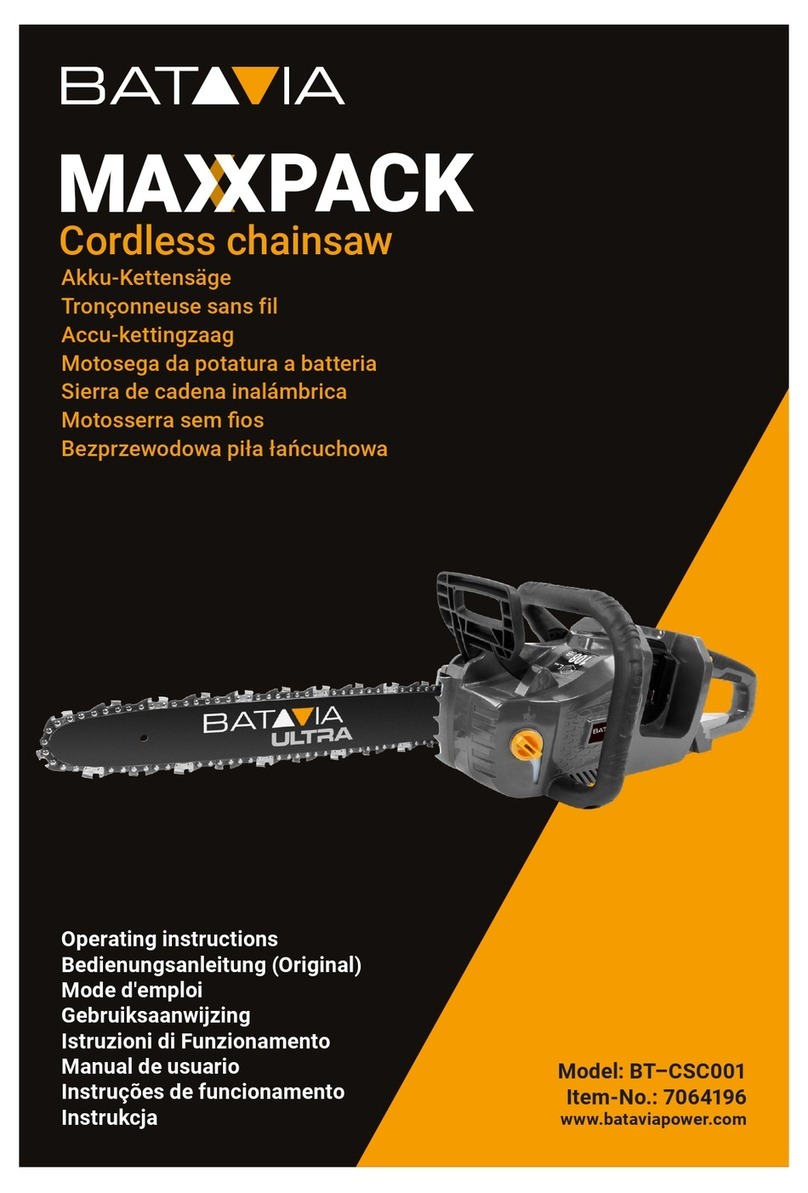Safety precautionsfor chain saw operators
While operatingthe chain saw please observe the
followingrules:
a) Contact of the guide bar nose with any object
should be avoided.
b) Tip contact may cause the guide bar
to
move
suddenly upwardand backward, which may
causeserious or fatal injury.
Always operate the chain saw with bothhands.
c)
manual. Failure
to
follow instructionscouldresult
in
serious injury.
It
is recommended
to
lend the
chainsaw only
to
peoplewho are experlencedin
workingwith chain saws. Always handover the
Owner‘s andSafety Manual.
WARNING!
Tbischainsaw
k
capable
of
severekickbackthat
couldresultinseriousinjury
to
theoperator.
Do
not
operate this chain saw unless you have
extraordinarycuttingneedsandexperience
in
and
specialtrainingfor dealing with kickback Chain
sawswithsignificantlvreducedkickbackwtential
areavailable.
Kickback may
occur
whenthe no
guide bar touches an object,
or
w
closesinandpinchesthesaw
chain
ntact
may
abruptly
stop
th
me
cases
may
cause a
lii
ction,WkingtheguIdebar
user,
or
pushthe guide b
reducethe risk
of
a kckbadcandpotentialinjury.
With
a-basicunderstandina
of
kickback. vou
C.
D.
E.
F.
canreduceoreliminatethe
e7ementot
surpise.
It
is
a sudden surprise that contributes
to
acciden
Keep
a
hands, your right hand on the rear grip and
yourlefthandonthetubularhandle,whenthe
engineisrunning.Usea
firm
grip
with
thumbs
andfingersencirclingthechainsaw handles.
A
firm
grip
can
neutralize kickbackand help
you maintaincontrolof the saw. Don’t letgo!
Make sure that the area in which you are
cuttingisfreefromobstructions. Donotletthe
noseof theguidebar contactthe log, branch,
or any other obstructionswhich could be hit
whileyouare operatingthe saw.
Donotoverreachorcutaboveshoulderheight.
Follow manufacturer‘ssharpeningand main-
tenanceinstructionsforthesawchain.
Only usereplacementbarsandchainsspeci-
fiedbythemanufacturerortheequivalent.
Additional safety precautions
Thefollowingadditionalsafetyprecautionsshouldbe
.
observedby allusersof chainsaws:
1.
2.
3.
4.
5.
6.
7.
8.
Do
notoperateachainsawwhenyouarefatigued.
Use safety footwear; snug-fitting clothing;
protective gloves: and eye, hearing, and head
protectiondevices.
Usecautionwhen handlingfuel. Movethe chain
saw at least 10feet
(3
m) from the fueling point
beforestartingthe engine.
Do
not allow other persons
to
be near the chain
saw when startingor cutting with the chain saw.
Keep bystanders and animals out of the work
area.
*
Do
not start cutting until you have a clear work
area, secure footing, and a planned retreat path
from the fallingtree.
Keep all parts of your body away from the saw
chainwhen the engine is running.
Before you start the engine, make sure that the
saw chain is not contacting anything.
Carry the chain’sawwith the engine stopped, the
guide bar and saw chain
to
the rear, and the
muffler away from your body.
-
-
-
.
9.
Do
not operate a chain saw that is damaged, is
improperly adjusted, or is not completely and
securely assembled. Be sure that the saw chain
stops moving when the throttlecontroltrigger is
released.
10.
Shut
off
the engine before setting it down.
11. Use extreme caution when cutting small sizec
brushandsaplingsbecauseslendermaterial may
catchthe saw chain and be whippedtowardyou
or pullyou off balance.
12. When cuttinga limb that
is
undertensionbealert
for
springback
so
that youwillnotbestruckwhen
the tension onthe woodfibers is released.
13.
14.
15.
16.
17
18.
Keepthe handlesdry, clean, andfreeof oil
or
fuel
mixture.
Operate the chain saw only in well-ventilated
areas.
Do
not operate a chain saw in a tree unlessyou
have been specifically trained
to
do
so,
All
chainsawservice,otherthantheitemslistedin
the owner’s manual maintenance instructions,
shouldbe performedby MAKlTA
.
(Forexample,
if
improper
tools
are used
to
removethe flywheel
or
if
an impropertool is usedto holdthe flywheel
inordertoremovetheclutchstructuraldamage
to
the flywheel could occur andcouldsubsequently
cause the flywheel
to
burst.)
When transportingyour chain saw, use the chain
protectioncover.
Low kickback bars and low kickback chains are
designed
to
reducethe riskof kickbackinjury.Ask
your MAKITAdealer about these devices.
’
’
4

